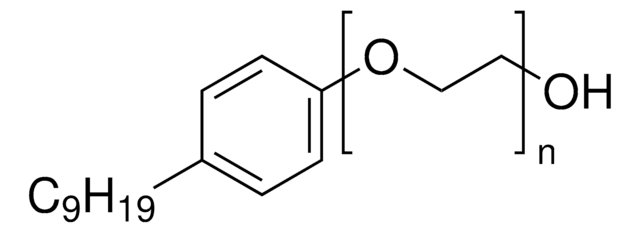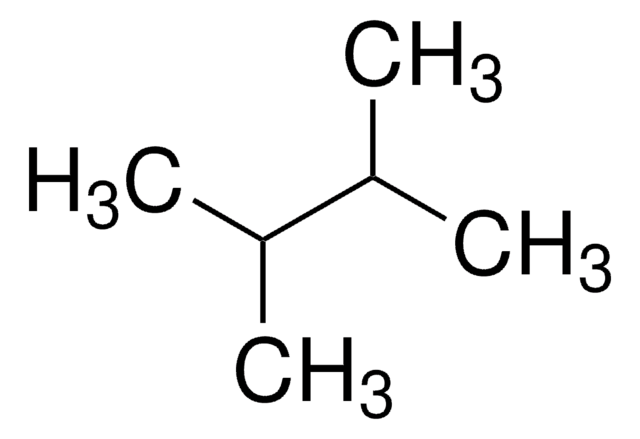34862
2,2,4-Trimethylpentane
suitable for HPLC, ≥99%
Synonym(s):
Isooctane
About This Item
Recommended Products
vapor density
3.9 (vs air)
Quality Level
vapor pressure
41 mmHg ( 21 °C)
Assay
≥99%
form
liquid
autoignition temp.
745 °F
expl. lim.
6 %
technique(s)
HPLC: suitable
impurities
≤0.0005% non-volatile matter
≤0.001% free acid (as CH3COOH)
≤0.01% water (Karl Fischer)
transmittance
210 nm, ≥20%
235 nm, ≥80%
270 nm, ≥98%
refractive index
n20/D 1.391 (lit.)
bp
98-99 °C (lit.)
mp
−107 °C (lit.)
density
0.692 g/mL at 25 °C (lit.)
application(s)
food and beverages
SMILES string
CC(C)CC(C)(C)C
InChI
1S/C8H18/c1-7(2)6-8(3,4)5/h7H,6H2,1-5H3
InChI key
NHTMVDHEPJAVLT-UHFFFAOYSA-N
Looking for similar products? Visit Product Comparison Guide
General description
Application
Other Notes
The article number 34862-4X2.5L will be discontinued. Please order the single bottle 34862-2.5L which is physically identical with the same exact specifications.
Signal Word
Danger
Hazard Statements
Precautionary Statements
Hazard Classifications
Aquatic Acute 1 - Aquatic Chronic 1 - Asp. Tox. 1 - Flam. Liq. 2 - Skin Irrit. 2 - STOT SE 3
Target Organs
Central nervous system
Storage Class Code
3 - Flammable liquids
WGK
WGK 2
Flash Point(F)
10.4 °F - closed cup
Flash Point(C)
-12 °C - closed cup
Certificates of Analysis (COA)
Search for Certificates of Analysis (COA) by entering the products Lot/Batch Number. Lot and Batch Numbers can be found on a product’s label following the words ‘Lot’ or ‘Batch’.
Already Own This Product?
Find documentation for the products that you have recently purchased in the Document Library.
Customers Also Viewed
Protocols
Protocol for GC Analysis of Hydrocarbons in Gasoline on Petrocol® DH
-Xylene; Nonane; Propylbenzene; Mesitylene; 1,2,4-Trimethylbenzene; 1,2,3-Trimethylbenzene; 1,3-Diethylbenzene; 1,4-Dimethyl-2-ethylbenzene; 1,2-Dimethyl-4-ethylbenzene; Durene; 1,2,3,5-Tetramethylbenzene; 1,2,3,5-Tetramethylbenzene; 2-Methylnaphthalene (β)
GC Analysis of Hydrocarbons in Gasoline on Petrocol® DH, Isothermal
Our team of scientists has experience in all areas of research including Life Science, Material Science, Chemical Synthesis, Chromatography, Analytical and many others.
Contact Technical Service








